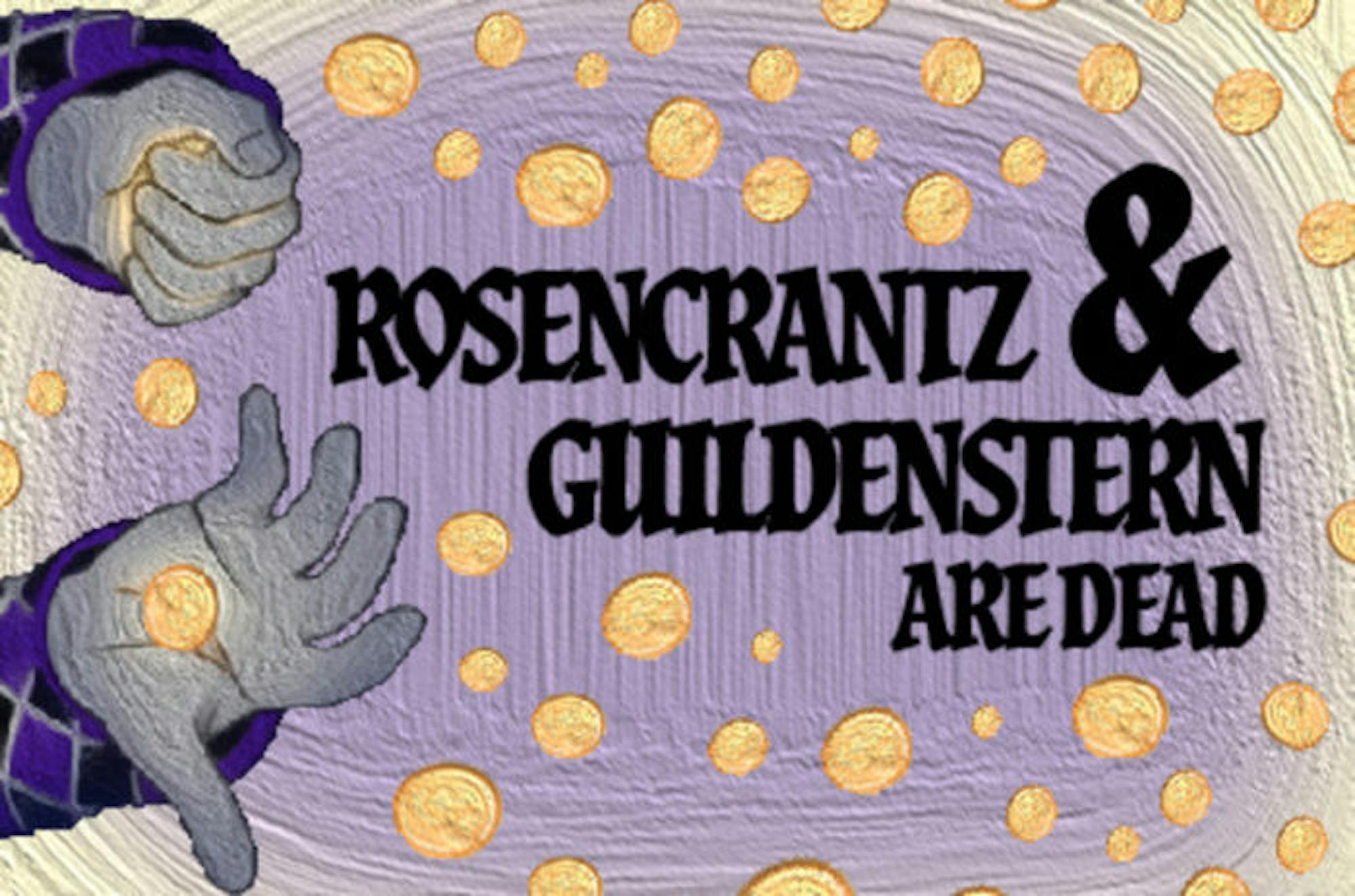
“Rosencrantz and Guildenstern Are Dead” takes place just offstage of Shakespeare’s tragedy “Hamlet.” In the original work, Rosencrantz and Guildenstern are courtiers and childhood friends of Hamlet who play tertiary roles in the plot and end up executed by the end of the play. This reimagining, written by Tom Stoppard and directed by Nick Buranicz, portrays the entire show through the eyes of Rosencrantz and Guildenstern, depicting only what they would see of the plot and characters — which isn't much. As minor characters, Rosencrantz and Guildenstern have no bearing on the plot. At several points throughout the play, we see Hamlet or another main character of Shakespeare’s play blow through the stage before the action of the plot takes them somewhere else — and Guildenstern and Rosencrantz are not allowed to follow. They are the central characters, but the issue is that they can’t actually do anything.
That isn’t to say that the play is boring. Most of the show’s conflict comes from Rosencrantz and Guildenstern struggling to figure out where they are, what they’re supposed to be doing, and even which one of them is Guildenstern and which is Rosencrantz. Buranicz and James Cullinane give incredible performances as the titular leads, playing off of each other perfectly as they fling from comedy to tragedy in the course of a conversation. The nature of the play — which spans a lengthy three hours, with two ten-minute intermissions that feel more for the actors’ benefit than the audience’s — means that the majority of the show is just Rosencrantz and Guildenstern bantering back and forth between themselves, or occasionally not talking at all. The opening scene, for example, consists of the two flipping a coin and betting whether it will land on heads or tails. It unfailingly lands on heads over and over and over again, always gleefully announced by Buranicz, while Cullinane expertly monologues about philosophy, probability and divine intervention.
The set, comprised of receding levels of plain white sheets, is simple but dynamic. In one scene, the sheets serve as hallways for the other characters to enter through. In another, they’re the curtains for the “play within a play” performed by a troupe of tragedians and led by Tim Merkle as the Player, who serves as a delightful contrast to Rosencrantz and Guildenstern. Later, the sheets are tied up to mimic sails as Rosencrantz, Guildenstern and Hamlet sail to England. The set’s simplicity is pivotal to the tone of the play; the nondescript nature of the space and lack of environment lend themselves well to the idea that the audience is missing something, like what we’re seeing is the backstage of something greater.
Contrary to the title of the play, and counter to previous adaptations, Rosencrantz and Guildenstern are not dead. Faced with the inevitability of their own execution and having seen it already acted out before them by the tragedians, the two characters do everything they can to delay their fate. In doing so, they “break out” of the play itself, resulting in a beautiful moment where they see the audience in front of them with tear-filled eyes. They hide in front of the curtains as they watch the final scene of “Hamlet” from afar, safe from the tragedy that they could have escaped only by removing themselves from it entirely.
“Rosencrantz and Guildenstern Are Dead” is a fascinating examination of free will through the lens of theatre. The show masterfully plays with metatheatre and asks, “What happens to the characters who can’t do anything?” Director Nick Buranicz responds: They figure out a way to do something.
Title: “Rosencrantz and Guildenstern Are Dead”
Starring: Nick Buranicz, James Cullinane
Director: Nick Buranicz
Where: DeBartolo Performing Arts Center
When: April 8-10
Shamrocks: 5 out of 5













